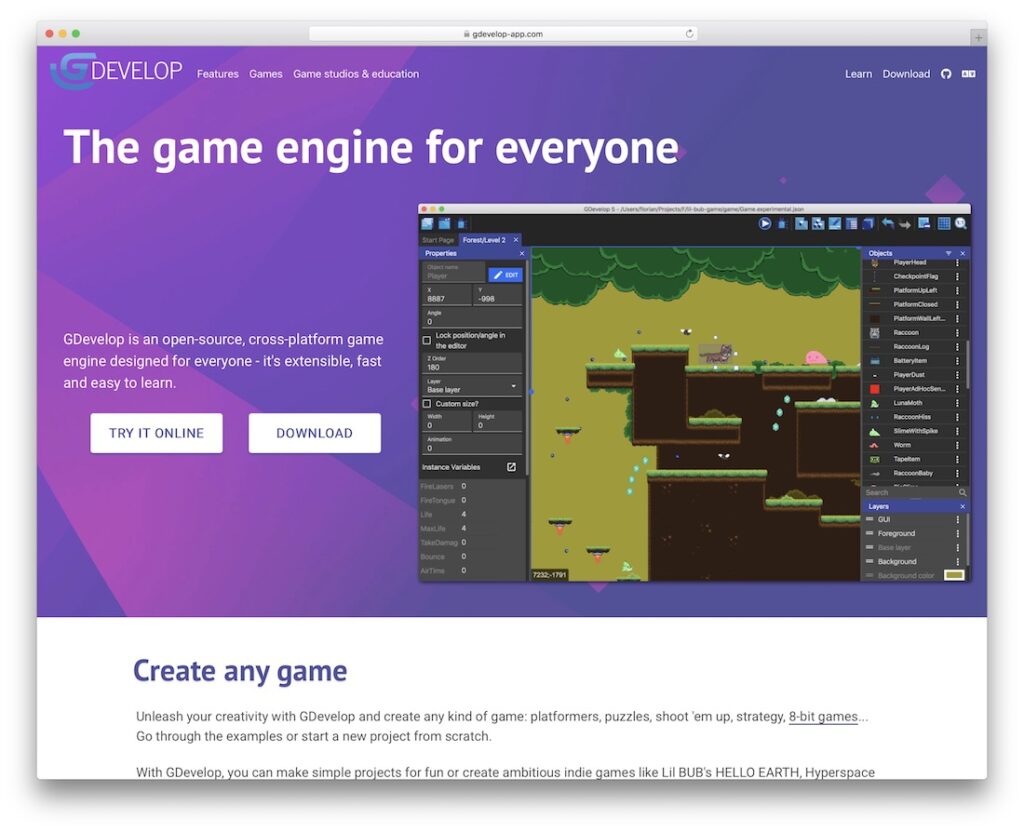JavaScript is a popular language for building browser-based games, allowing developers to add dynamic behavior for a more immersive experience. In this article, the basics of JavaScript in game building, game development frameworks, game mechanics, HTML5 canvas for building graphics, gameplay logic and state management, adding audio, optimizing game performance for different devices and browsers, and testing and debugging are explored. Understanding these key elements will help developers create engaging and entertaining games that captivate players of all gaming skills.
Introduction:
JavaScript is widely used in building browser-based games. This versatile and lightweight programming language has the capacity to add dynamic behavior to a game, allowing for a more immersive and engaging gaming experience. In this article, we’ll explore how games are made using JavaScript, and provide an overview of the key elements needed to build a browser-based game.
HTML Headings:
1. The Basics of JavaScript in Game Building
2. Understanding Game Development Frameworks
3. Game Mechanics: How to Structure Your Game
4. HTML5 Canvas: Building Your Game’s Graphics
5. Gameplay Logic and State Management
6. Adding Audio to Your Game
7. Optimizing Game Performance for Different Devices and Browsers
8. Testing and Debugging Your Game
The Basics of JavaScript in Game Building:
Before we dive into the process of game development, it’s important to understand the role of JavaScript in building browser-based games. JavaScript is a programming language that allows developers to add dynamic functionality to a webpage. In game development, JavaScript is used to add interactivity, manage game mechanics, and program the behavior of game elements such as characters, objects, and audio.
Understanding Game Development Frameworks:
Game development frameworks are pre-built libraries that help developers to streamline the game development process. These frameworks offer a range of functionalities that make it easier to build games of different complexity levels, from simple games to more complex ones. Examples of game development frameworks include Phaser, PixiJS, and ImpactJS.
Game Mechanics: How to Structure Your Game:
Game mechanics is the framework that structures how players interact with the game world. It consists of various elements such as balance, progression, feedback, and difficulty curve. To create a successful game, it’s vital to structure your game mechanics properly. This involves breaking down your game goals, understanding the target audience, and ensuring that the game mechanics align with the players’ expectations.
HTML5 Canvas: Building Your Game’s Graphics:
The HTML5 canvas element is used to draw graphics on a webpage using JavaScript. It allows developers to create and manipulate images, text, and animations that can be used in building browser-based games. With HTML5 canvas, developers can create complex game graphics, such as backgrounds, characters, and scenery.
Gameplay Logic and State Management:
In game development, gameplay logic refers to the set of rules that govern how the game works. This includes the game’s core mechanics, scoring, and objectives. State management refers to the process of tracking changes in the game’s state, such as player positions, scores, and outcomes. By managing the game’s state, developers can create a more immersive and responsive gaming experience.
Adding Audio to Your Game:
Sound plays a crucial role in game development, as it adds to the overall experience of the game. With JavaScript, developers can add audio effects such as background music, sound effects, and character dialogue to their games. This can enhance the mood, create a more immersive experience, and provide important feedback cues to the player.
Optimizing Game Performance for Different Devices and Browsers:
Browser-based games need to perform consistently across different devices and web browsers. There are many factors that can affect game performance, such as screen size, internet speed, and device processing power. Optimizing your game’s performance involves testing your game on different devices and browsers, optimizing game content and graphics, and using performance monitoring tools to identify and fix performance issues.
Testing and Debugging Your Game:
As with any development project, testing and debugging are critical to ensure that your game works properly. In the case of game development, testing involves playing the game and identifying bugs, errors or oversights in gameplay mechanics or graphics. Debugging entails using tools such as browser consoles, code editors, and debugging software to find and fix issues in your code.
Conclusion:
In conclusion, JavaScript has proven to be an effective tool for building browser-based games. Understanding the basics of JavaScript, game development frameworks, game mechanics, graphics, audio, and performance optimization is key to creating an engaging and immersive gaming experience. While game development can be a complex process, with these tools and techniques, you can create great games that captivate and entertain players, no matter what their gaming skills.
